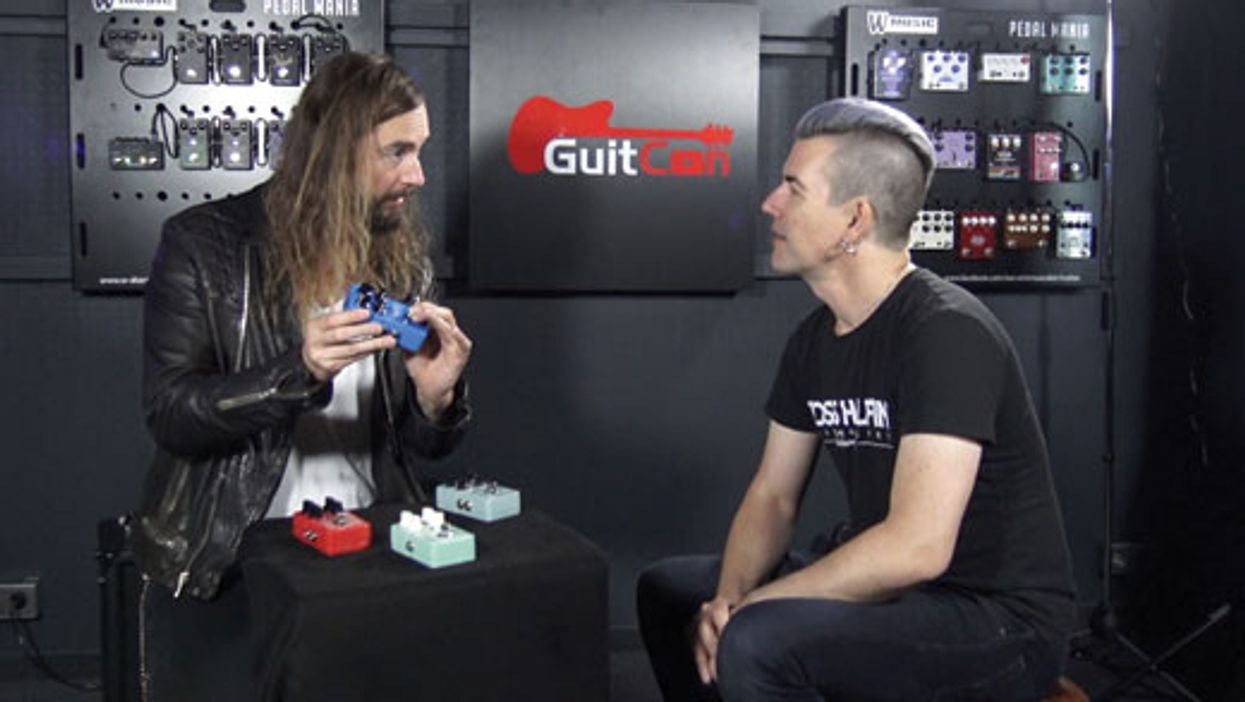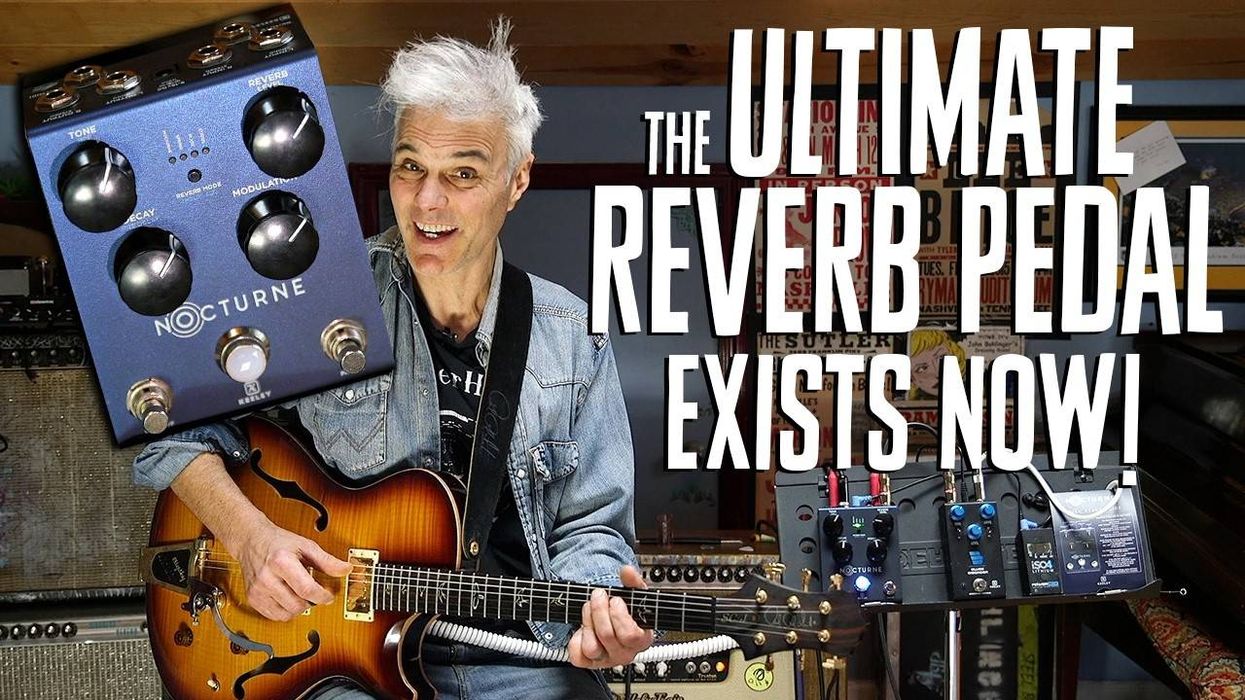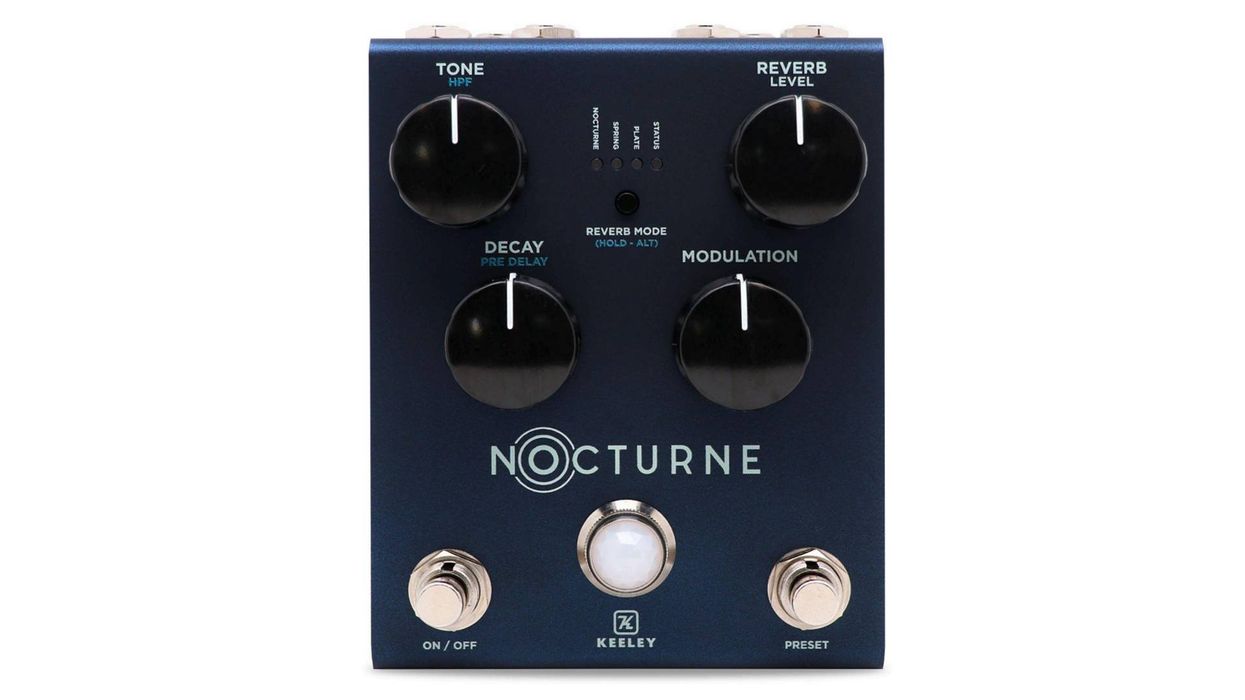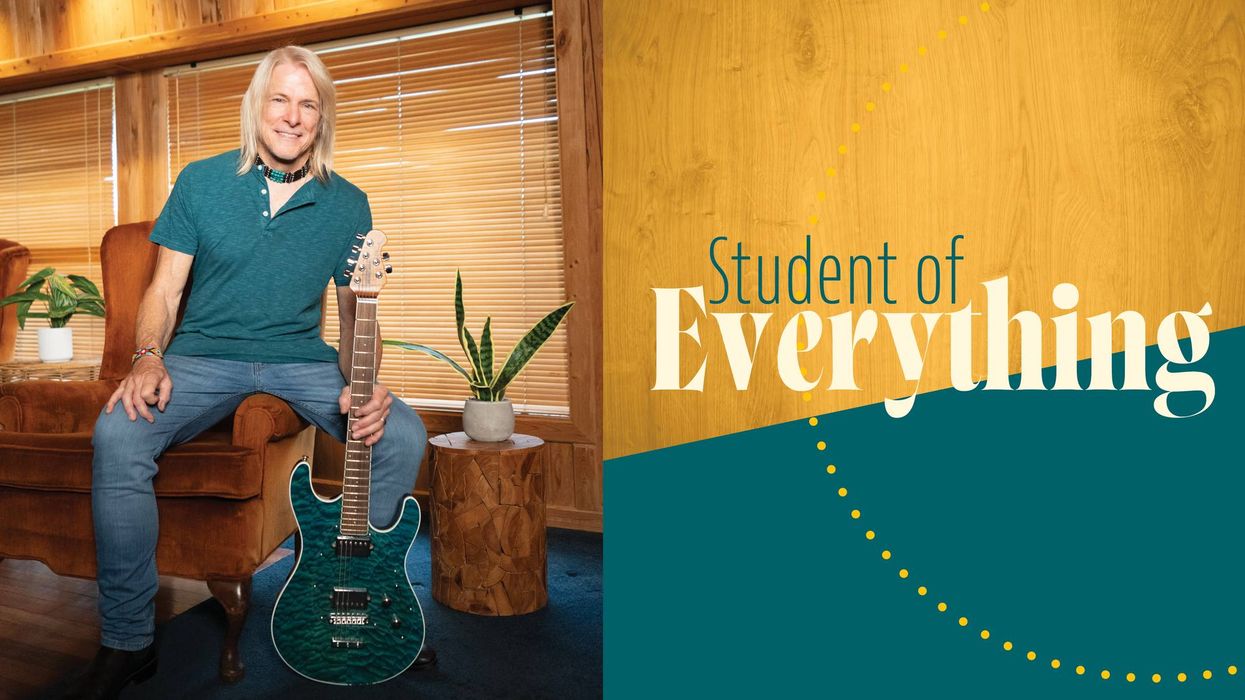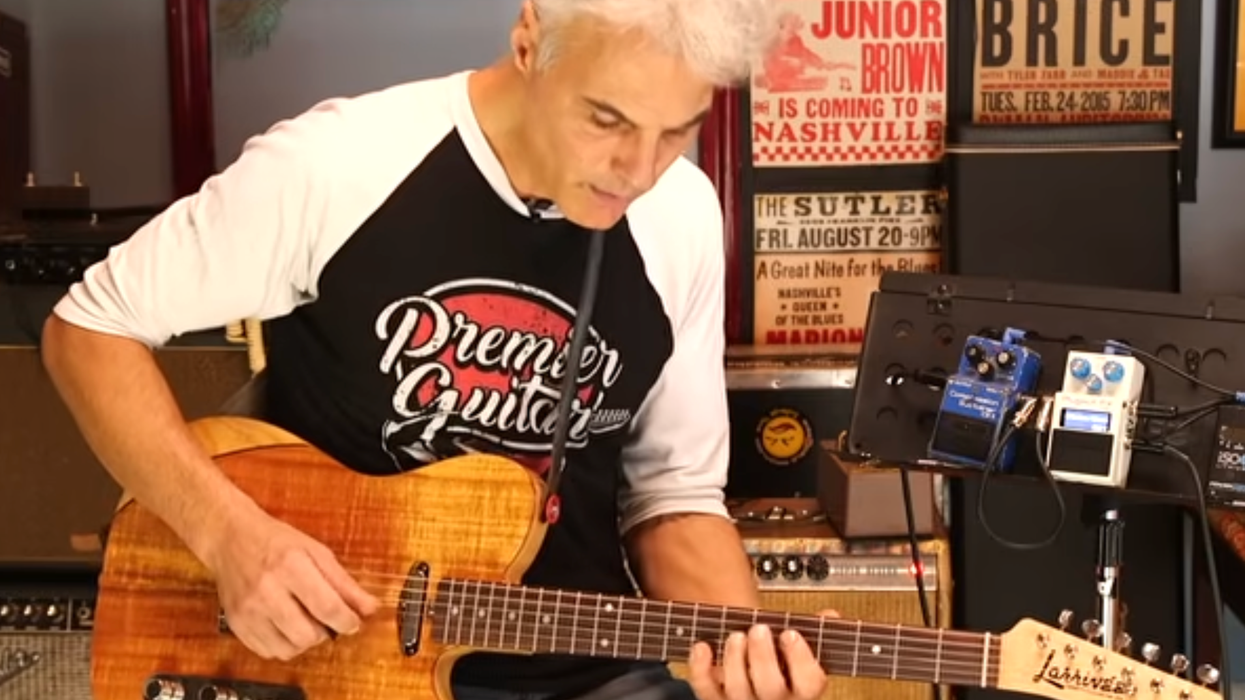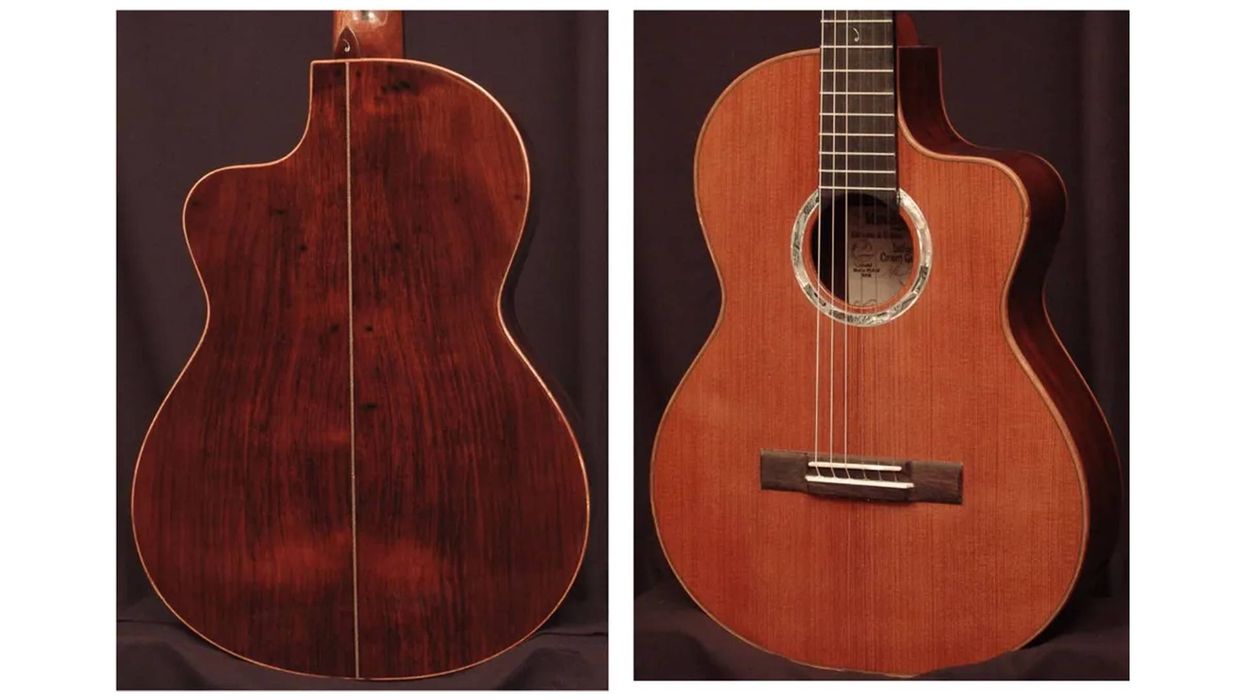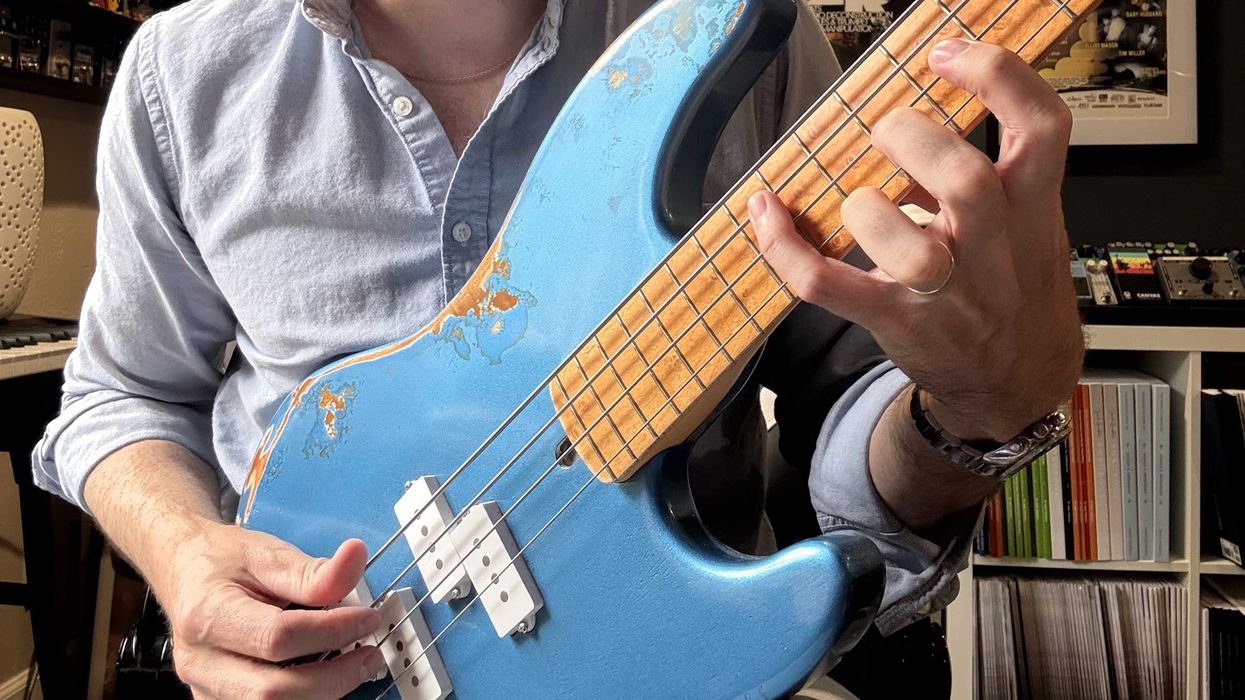Greetings, tone hounds! I've said before that we live in a golden age of guitar gear, but nowhere is this more evident than the massive range of effects pedals available today. Manufacturers large and small are constantly releasing new stompboxes and giving us guitarists access to a seemingly unlimited variety of tones. Sometimes, however, I wonder where it's all going. Are there really any new sounds left to discover?
I just returned from GuitCon 2017, the inaugural meeting of guitarists, gear manufacturers, and guitar-oriented YouTubers held at the Warwick/Framus factory in Markneukirchen, Germany. We jammed lots, created tons of great video content, and spent quality time just chatting about music and guitar. With questions in hand, I sat down with two guys who really have their fingers on the pulse of modern, guitar effects: TC Electronic's Tore Lynggaard Mogensen and Robert Keeley.
Robert Keeley
With so many effects pedals on the market these days, do you still see a space or category that needs to be filled?
Keeley: I think what's left for me is that I like to combine effects. For example: an envelope filter combined with a phaser. Or a modulated delay, but instead of a chorus pitch-y type of modulation, I think, “What would it sound like with a flanger?" Sometimes, lo and behold, it sounds ridiculously good! I'll look and see if anyone else has ever done it, and many times, no one has. So I try and force myself to think of combinations that haven't been done in a single-pedal format. It's fun, to me!
So you're trying cool combinations of existing effects that have never been combined in a single pedal. What else?
Keeley: That's right. And the other aspect is how can I make it more dynamic and expressive? If I come across an old effect I really like but it could be better, or if I do my version of it and it's not quite like what I remember from old records, how can I massage it so it sounds like what you and I have come to expect a classic effect sound to be? For me, it's correcting and perfecting things, and combining effects in a way that hasn't been done before.
Tore Lynggaard Mogensen
Your TonePrint pedals were innovative, and now you have new versions of the TonePrint pedals that feature MASH technology, which essentially turns the on/off footswitch into an expression pedal. What are you excited about developing in the future?
Mogensen: I think there are still tons of ways to innovate. In terms of sounds: by mixing two or three or four existing effects together to create something new.
Unique hybrid sounds?
Mogensen: Yes, exactly. That's one way to innovate, but also with what we've done with MASH technology, which is just scratching the surface. Basically, controlling effects in new ways to create new sounds. A good example would be the wah pedal or the Whammy pedal. When the wah came out, it wasn't like a filter hadn't been invented before. When the Whammy came out, it wasn't like a pitch shifter hadn't been invented before. But the unique thing—the thing that made them cool and fun—was the way in which you could control these effects. There are many effects out there that we already know of, but if we control one in a new way, it almost becomes a new effect.
Tell us about MASH.
Mogensen: I would scour our Facebook page and guitar forums looking for suggestions and improvements people wanted to see in our pedals. One of the things people would suggest was an expression-pedal input. That would have been really easy to do, but in looking at pictures of people's pedalboards, I'd rarely see anybody using expression pedals.
They take up lots of space.
Mogensen: Right, and you can usually only use them with one pedal, so if you have three pedals with expression inputs, you'd end up with a huge board. But there are a lot of fun things to do with expression pedals! One of our engineers said, “You know, we can put it in the footswitch." So it turned into a year-and-a-half project to invent a pressure-sensitive footswitch. And that's really what it is: You press down on the switch, it detects the amount of force you apply, and you can control any effect parameter this way.
And back to Pete
I tried two of TC's MASH-equipped pedals myself, and I walked away very impressed. These pedals truly are, well, expressive. For instance, you can make a reverb with a 4-second tail and extend out to 20 seconds with a push of the switch for ambient textures that sustain into infinity. Release the pressure and it's back to the 4-second decay. It's addictive!
I came away from GuitarCon 2017 invigorated about the future of the electric guitar, because there is still so much yet to discover. Until next month, I wish you great tone!


